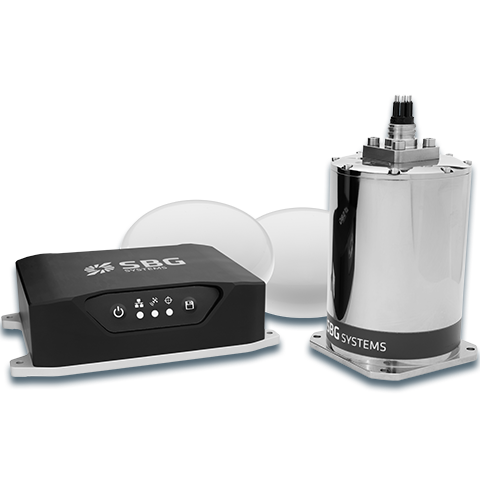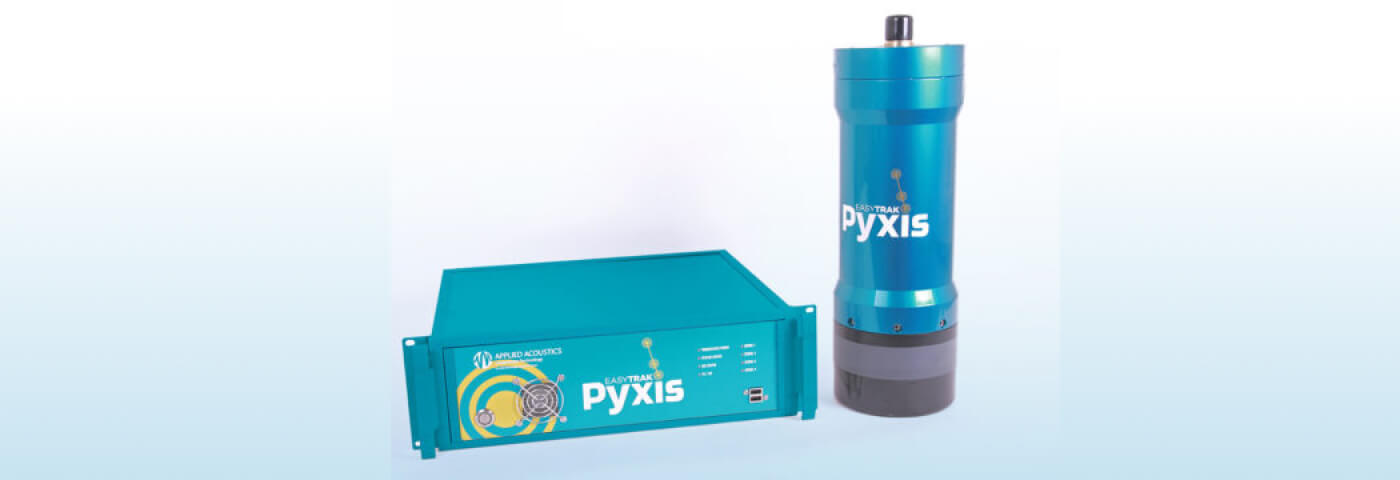Applied Acoustics: Acoustic Technology Expert of 30 years
Applied Acoustics is an English company specialised in highly technical acoustic products, such as underwater positioning, tracking, and seabed profiling equipment for underwater studies. For over 30 years the company has been at the forefront of both design and engineering excellence, manufacturing submarine equipment for all professional subsea applications, including offshore energy companies, academic institutions, and defense.
“From the beginning, SBG Systems felt like a good fit. On top of fitting to the requirements, we have such a good relationship with SBG, especially regarding the integration and overall help from the technical support team”
New Fully Integrated Easytrak Pyxis Inertial USBL System
A USBL, meaning Ultra Short Baseline, is an underwater positioning system composed of a transceiver that transmits acoustic signals to subsea beacons called transponders. With this technique, information such as range, bearing, and depth are collected to determine a position. Historically, Applied Acoustics’ USBL’s were interfaced with different external INS that could differ from one installation to another. This demanded a full calibration of the system in the field, which was pretty time-consuming. Because alignment is never totally perfect, this procedure could also affect accuracy.
The company’s new USBL called Easytrak Pyxis was designed to bring more accuracy to professionals, by combining their USBL technology with an embedded Inertial Navigation System (INS). The benefits of this oncoming solution are major gain in performance but also in time and cost. This built-in system is factory-calibrated, sparing customers time to calibrate it and improving overall accuracy. The USBL’s transducer is now very easy to handle. Easytrak Pyxis is portable and can be mounted on all kinds of platforms, such as boats, USV, or buoys.
Combining Cost-effectiveness and Accuracy with SBG Systems INS
USBL needs a high heading accuracy, as a poor heading can affect overall positioning quite severely. “Motion performance, as well as roll, pitch, and heave, are all important parts of the USBL compensation, but heading is the key factor for overall performance,” states Gavin Willoughby, Business Development Manager at Applied Acoustics.
The company chose the OEM version of the Navsight Apogee Solution from SBG Systems. It is composed of a processing board with GNSS on the one hand, and on the other hand, the Inertial Measurement Unit that is closely aligned with the transducer. This highly advanced and cost-effective INS solution comes in a very compact form combined with high accuracy motion, navigation, and heave, with a 0.025° GNSS-based heading. It is also ITAR-free, with no export restrictions. “From the beginning, SBG Systems felt like a good fit. On top of fitting to the requirements, we have such a good relationship with SBG, especially regarding the integration and overall help from the technical support team,” declares Gavin.
Applied Acoustics shares the same vision as SBG Systems, which is that technology should be easy to handle, cost-effective, and flexible. Indeed, the Apogee Navsight OEM solution brings to the new Easytrak Pyxis a maintenance-free and cost-effective system with unlimited firmware updates and easy web interface.
About Navsight Apogee OEM
The OEM version of our Navsight Marine Apogee solution delivers the same level of performance and accuracy than the original Navsight Marine Apogee. The only difference between these two products is that the OEM version comes in a smaller and lighter enclosure and fits portable applications such as the Pyxis perfectly.

Ideal for challenging shallow to deep water applications and hydrographic tasks, this highly versatile INS delivers amazing performance during GNSS outage. The Apogee IMU that is connected to the Navsight rugged processing unit embedding the fusion intelligence can either come in a surface version (IP68 enclosure) or subsea version (waterproof 100m). Navsight Apogee is also compatible with SBG Systems in-house post-processing software Qinertia.
For more details, visit the SBG Systems website.


